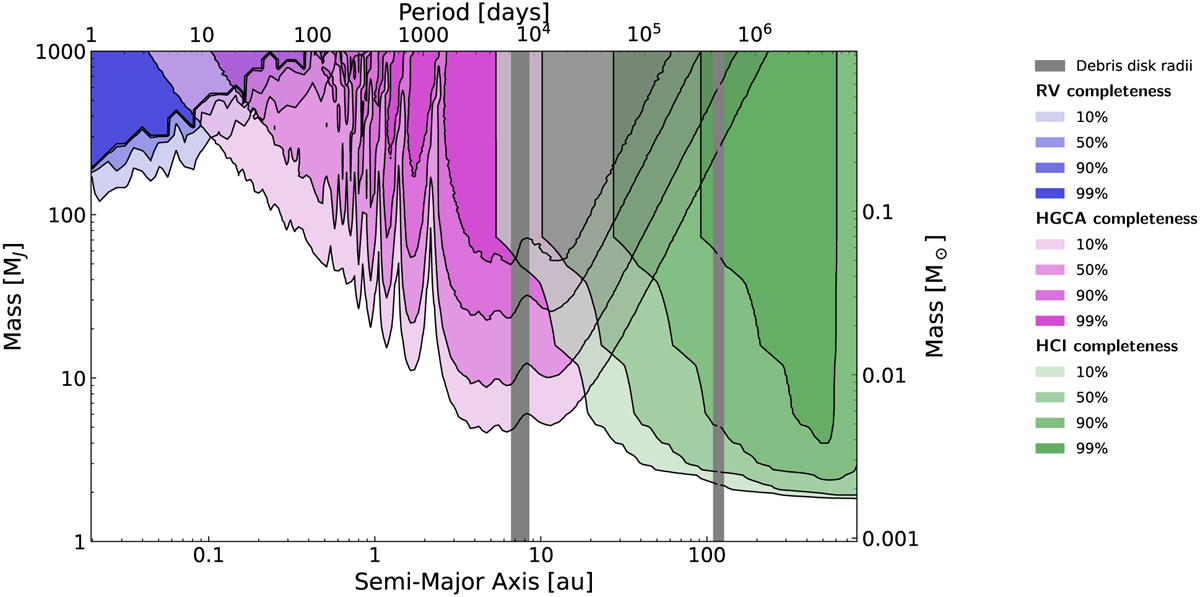Fig. 5

Download original image
Detection completeness for HD 112810. Shaded rows show completeness for radial velocity observations (blue), HIPPARCOS-Gaia proper motion analysis (pink), and high-contrast imaging observations (green) along with the debris belt positions (gray). Shaded regions indicate the mass vs separation contours at which 10%, 50%, 90% and 99% of companions would be detectable with in-hand data, as described in Sects. 6.3, 6.4 and 6.1 respectively. The inner and outer belt positions are derived from the SED fit and SPHERE modeling respectively. Planetary mass companions and small brown dwarfs at intermediate and wide separations are largely ruled out from the proper motion and imaging constraints. The radial velocity constraints are weaker, ruling out only massive stellar companions at short periods.
Current usage metrics show cumulative count of Article Views (full-text article views including HTML views, PDF and ePub downloads, according to the available data) and Abstracts Views on Vision4Press platform.
Data correspond to usage on the plateform after 2015. The current usage metrics is available 48-96 hours after online publication and is updated daily on week days.
Initial download of the metrics may take a while.


